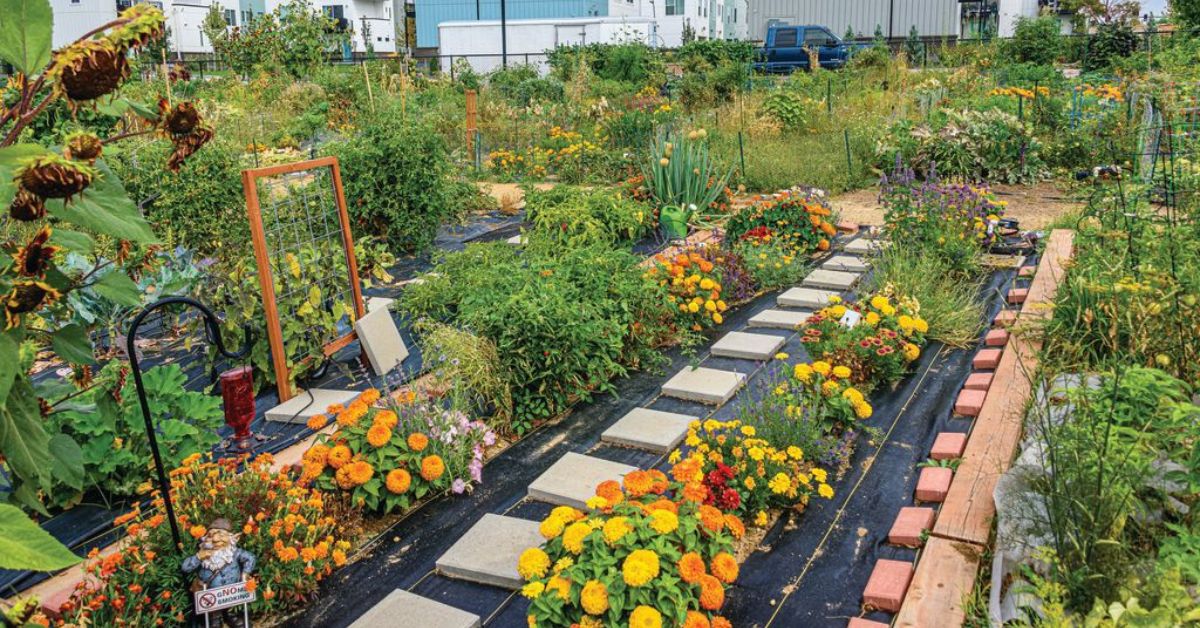By Nicole Rivard
The first time I peered through the chain link fence surrounding the 60 organic garden plots at Cherry Lawn Community Garden in Darien, Connecticut, the town where Friends of Animals is headquartered, I admired how each plot had its own personality. Some had perfectly organized rows of lettuce between artfully placed walking paths; others were untamed like wildflower meadows.
The garden was teeming with life yet at the same time offered a stillness. I wanted to be a part of it. So, I put my name on the waiting list for a plot and one became available.
In addition to the satisfaction of having my hands in the soil and growing my own vegetables, because of my work at FoA, I relish knowing I’m part of something that is helping wildlife and the environment. We follow organic gardening practices and don’t kill any animals who dare to nibble on some lettuce or tomatoes.
Community gardens positively affect biodiversity and local ecosystems, according to a study released last year by multiple universities, including University of Texas at Austin. Researchers looked at 28 organic urban community gardens across California over five years and quantified biodiversity in plant and animal life, as well as ecosystem functions.
“We found that these gardens, which are providing tremendous nutritional resources and increasing well-being for gardeners, are also supporting incredibly high levels of plant and animal biodiversity. It’s a win-win,” said Shalene Jha, an associate professor of integrative biology at UT at Austin, and lead author.
Previous assumptions by scientists about the negative effect of food production on biodiversity have been entirely based on intensive rural agriculture enterprises that tend to grow only one or two types of crops, often on a massive scale. Community gardens grow more types of plants in smaller areas.
“Community gardens are one of the few larger ‘green spaces’ in cities, and thus provide habitat—food and nesting resources—for all kinds of organisms from plants to insects, birds, lizards, and others,” added co-author Stacy Philpott, a professor at University of California, Santa Cruz. “Often, urban gardens have a lot of flowers, tree cover, may be cooler than the surrounding concrete areas of cities, and for those reasons are important for biodiversity.”
Ripple effects
The study found that the choices gardeners make can have a large impact on their local ecosystem. The gardens that researchers looked at do not allow the use of toxic herbicides, pesticides, fungicides or fertilizers. “Just this has a beneficial effect for biodiversity of plants, animals, fungi, etc.,” Philpott said.
All Wasatch Community Gardens in Salt Lake City, Utah, are organic. In addition to helping create new gardens, they offer education in organic vegetable gardening. They teach that thoughtful garden design can prevent many pest issues from occurring in the first place (see sidebar).
Even whether people apply wood chips or mulch in the pathways of the gardens matters.
“Mulch has a really positive effect on retaining moisture in the soil, and positive effects on spider abundance,” Philpott said. “But mulch use has a negative effect on pollinators and ladybugs.”
Ladybugs are one of the most important predators of aphids and other destructive insects. Most insects are beneficial to gardens, or benign. So Philpott suggests using mulch in some places, but not covering the entire garden.
“Lastly, floral abundance and richness is extremely important—having more flowers, and a higher diversity of flowers supports more pollinators, including bees, flies, butterflies, but also natural enemies like ladybugs,” Philpott said.
Live and let live
As much as gardeners feel good about stewarding biodiversity, most don’t enjoy it when rabbits, ground squirrels, voles and gophers eat their crops. However, there are plenty of non-lethal preventative methods. If you’re part of a community garden that doesn’t have rules against lethal predator control, advocate for them!
Fencing is the best way to keep most creatures out of your plot. Rabbit fencing should have wires spaced closer together at the bottom and should be a minimum of 18 inches high.
To prevent animals from burrowing, you can dig a trench around your plot and bury a wire mesh screen (hardware cloth), or install fencing at least 10 inches deep.
Gardeners can also deter rodents by planting natural repellent plants such as fritillaria imperialis, euphorbia lathyrism (mole grass), natal plum, lavender, salvia, catmint, oleander, penstemons, rhaphiolepis, rosemary and/or strawberries.
My gardening friends and I don’t stress over losing some of our bounty to wildlife. It’s just part of gardening. And so is not always succeeding.
So far, I haven’t been able to get eggplant or beets to grow.
But even sharing stories of snafus with my fellow gardeners is lots of fun. They show me how important it is to have the willingness to learn from both successes and failures. There’s always next season.
And there’s always the thrill of anticipation that gardening provides.
TAKE ACTION
Thoughtful Garden design
Before joining a community garden in your area, make sure it follows organic guidelines.
Choose disease resistant vegetable varieties that thrive in your region, plant them in soil rich in organic matter, and establish them well before the summer heat.
Always rotate crop locations each year to prevent insects and diseases from getting out of control. Crop rotations can have the additional benefit of conserving soil nutrients while increasing nitrogen to the soil. For example, planting “nitrogen-fixing” crops like peas, favas, and beans can resupply the soil with some of the nitrogen that will be used by a future crop such as corn.
Companion planting uses vegetables with different qualities—height, pest resistance, leaf canopy, etc. —to suppress weeds and pests. One traditional example is the “three sisters” of corn, beans, and squash. The corn provides a trellis for the soil-enriching beans to grow on, with the broad-leafed squash crowding out potential weeds. This kind of “polyculture” —especially when using different varieties of each vegetable type—enhances disease-resistance, with companion plants creating alternative targets for pests or attracting helpful predators and beneficial parasites to your garden.

